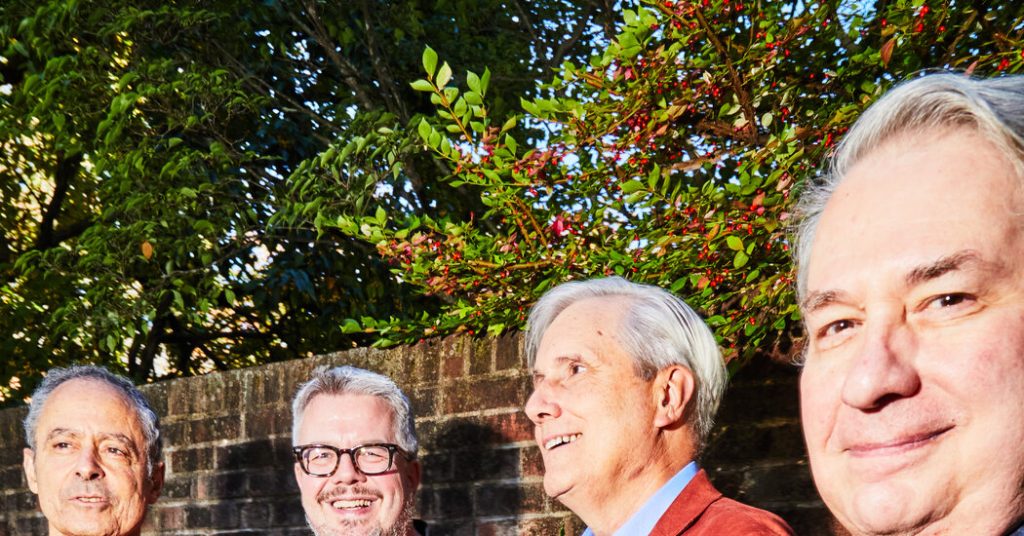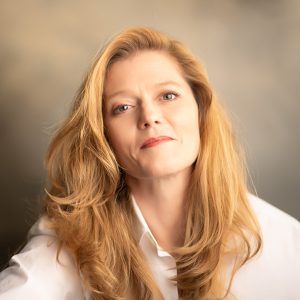After 47 Years, the Emerson Quartet Has One More Weekend

Five years ago, Eugene Drucker, a violinist in the Emerson String Quartet, got a call from a financial adviser. To sketch out a plan for Drucker, the adviser needed his target retirement age.
“When he asked me, it seemed like a fairly academic question,” Drucker, now 71, recalled recently. “The quartet had not at all discussed an endgame.”
He told the group the anecdote as something of a joke. (This is a foursome that laughs — a lot.) To his surprise, it spurred a more serious discussion about the future of the Emerson Quartet, one of the most celebrated ensembles in classical music for almost half a century.
The conversation eventually led to a decision, and on Saturday and Sunday at Alice Tully Hall — next to the Juilliard School, where the quartet formed — the quartet will play its final concerts. With three members near or over 70, and little desire to keep the name alive without its founders, it’s quitting while it’s ahead.
“There’s a feeling I think we all had: We were afraid of going on too long,” said Philip Setzer, the other violinist. “People have memories of what it was like to go to an Emerson Quartet concert, and we didn’t want to start having them hear a lesser version of that. I’m a big sports fan, and you see people play past when they should stop.”
Lawrence Dutton, the group’s violist, added: “We saw it with teachers and mentors and players we had incredible respect for. It’s not pretty when it happens.”
And from its formation in 1976, the Emerson Quartet sounded pretty. It became famous for its rich vitality and easy power in a vast repertory that it recorded prolifically and toured tirelessly.
“Particularly in the U.S., the Emerson was maybe the only reference a lot of people had for a string quartet,” said the violinist Ryan Meehan of the Calidore Quartet, one of many younger groups the Emerson has mentored. “It speaks to their incredible artistry and their recording and performing: how far their reach was, even for people who weren’t really classical concertgoers.”
Setzer and Drucker met as students of Oscar Shumsky at Juilliard and were original members. In the country’s bicentennial year, it seemed right to name the group after the great idealist American writer.
“The sound, the gravitas, the way they treat each other is so beautiful,” the soprano Barbara Hannigan, an Emerson collaborator, said in an interview. “It’s a model for living, really. I’ve never seen any tension between them. I’ve seen discussion and critical thinking, but there’s no ‘this side’ and ‘that side.’”
From the Juilliard Quartet, long illustrious by the 1970s, the group learned the lessons of raw vigor and commitment to a broad repertory, including new commissions. Listening to the Guarneri Quartet, younger but already august, the Emerson took on a polished, burnished, sheerly beautiful tone. (For certain listeners, on certain nights, that beauty could tip into blandness.)
“There wasn’t really a long-term plan, because we were young,” Drucker said. “But there was the greatness of the repertoire for string quartet. And as a proto-Emerson student group, we had elicited a fairly strong positive reaction, which made an impression on us that this was something to pour energy and time and resources into.”
By the end of the ’70s, Dutton and the cellist David Finckel had joined, and the roster was set for more than three decades. It didn’t change until 2013, when Finckel stepped aside to focus on other endeavors, including the leadership of the Chamber Music Society of Lincoln Center, which is presenting the finale. He was replaced by Paul Watkins, the baby of the group at 53.
Watkins said he prepared for his first session with the others, a kind of audition, by listening to Emerson recordings.
“But I didn’t want to imitate what David had done,” he added. “I wanted to show that I could be sympathetic to them, and bring my own personality and sound into it as well. It needed to happen instinctively, and quickly: love at first sound. And thank god, it did.”
A quartet is an intimate, intense unit — “a benevolent four-headed monster,” Hannigan said. Peter Mennin, then the president of Juilliard, went to an early Emerson concert and told its members that if they could survive five years, they might be able to go the distance.
Five years later, in 1981, came a milestone: a marathon performance of Bartok’s six string quartets at Tully Hall for the composer’s centennial, two and a half hours of demanding, opulently bristling music. Many groups were playing the works that year, but not like that.
“At first people said, ‘That’s ridiculous; you’re just doing it for show,’” Setzer said. But the concert was an unlikely sensation, establishing the Emerson as an ensemble to be reckoned with.
The group was also notable (and, initially, somewhat polarizing) for having Drucker and Setzer switch between the first and second violin parts for different pieces. This is common in student ensembles, but professional quartets usually have set first and second violinists.
“It’s close to 300 pieces we’ve done, which is a lot,” Setzer said. “And part of that was because of the switching. I can’t imagine doing that amount if I’d had to do first violin in all of it.”
With a smooth, vigorous, cleanly modern sound that also nodded to the golden glow of an earlier era, the Emerson was, Dutton said, “at the right place at the right time, blossoming just as the CD boom was happening.” The ensemble scored a contract with the eminent label Deutsche Grammophon, which wanted new digital versions of as much music as the group could set down.
The explosion of albums made the Emerson omnipresent, and included benchmark recordings of the complete Beethoven, Shostakovich and Bartok quartets. And there is also — among some three days’ worth of recorded sound — warmly lucid Bach, Haydn and Mozart; nostalgic yet energetic Dvorak and Tchaikovsky; and contemporary music by composers as different as Gunther Schuller and Ned Rorem.
All this was toured indefatigably, with over 140 concerts one year. “The sheer volume, playing this incredible repertory, it takes its toll,” Dutton said. (“If you do it right,” Setzer added.) The group tapered its schedule, but was still regularly playing almost 100 performances a year until the pandemic.
The end of the Emerson Quartet doesn’t mean full retirement for its members, who will maintain a variety of solo performing, arts administration and teaching duties. For more than 20 years the group has been in residence at Stony Brook University, where last Saturday they gave a preview of their magisterial Tully program: Beethoven’s Opus 130, rendingly fragile and vulnerable, and Schubert’s Cello Quintet, in which Finckel poignantly joined.
Their final recording, “Infinite Voyage,” with bracing yet seductive works by Schoenberg, Hindemith, Berg and Chausson, was released last month, featuring Hannigan.
“We were rehearsing onstage,” she said, recalling her farewell appearance with the group on Oct. 10 in Milan, in Schoenberg’s Second Quartet. “And they were still playing it over slowly, tuning every note, discussing, ‘Is this really the right tempo?’ It was the last rehearsal before a piece they will never play again, and they were still saying: ‘What do you think he meant here?’”
“We’re lucky because our very different personalities fit together,” Dutton said. “We respected each other. We knew we were different, but we had one purpose: to make great music. And we achieved that.”





